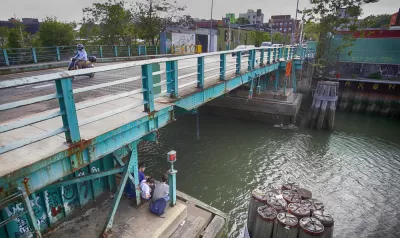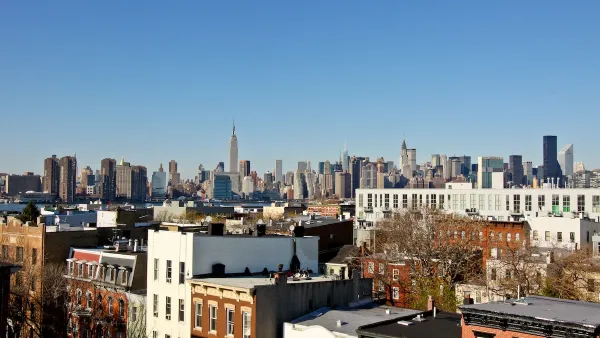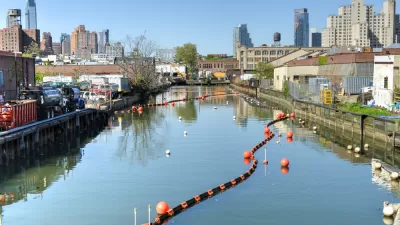The Brooklyn neighborhood of Gowanus was recently added to Mayor de Blasio’s sweeping zoning reform plan. But Gowanus also has plans of its own.

Bridging Gowanus, backed by City Councilmember Brad Lander, is a community planning effort spurred in part by residents’ fears that the rezoning program, meant to make room for more housing, could lead to speculation, rising land prices, and displacement.
The plan proposes a trade-off: Gowanus would absorb more density—in the form of both market-rate and affordable apartments—if some of the profit were directed toward investment in infrastructure as well as protections for current residents. The New York Times writes:
They lay out priorities that neighbors have debated and rallied around — improving streets and parks; protecting lower-income residents and small businesses; addressing environmental resilience. And, of course, making sure growth comes with more and better schools, cultural programs and transit.
The group's website suggests that there is potential for these plans to be adopted by the city:
Starting in the fall of 2016, the community will begin working with the NYC Department of City Planning and other government agencies to develop a planning and land-use framework for the Gowanus neighborhood.
Other neighborhoods are advocating for more protections in the city’s program. A recent report from Regional Plan Association detailed the need for the East Harlem Neighborhood Plan, which has support from City Council Speaker Melissa Mark-Viverito.
Though participating in the mayor's program, NYT writes, these community planning processes also reflect the notion that "zoning should grow out of holistic planning based on participatory governance."
FULL STORY: In Gowanus, a People’s Housing Plan to Challenge the Mayor’s

Planetizen Federal Action Tracker
A weekly monitor of how Trump’s orders and actions are impacting planners and planning in America.

Maui's Vacation Rental Debate Turns Ugly
Verbal attacks, misinformation campaigns and fistfights plague a high-stakes debate to convert thousands of vacation rentals into long-term housing.

Restaurant Patios Were a Pandemic Win — Why Were They so Hard to Keep?
Social distancing requirements and changes in travel patterns prompted cities to pilot new uses for street and sidewalk space. Then it got complicated.

In California Battle of Housing vs. Environment, Housing Just Won
A new state law significantly limits the power of CEQA, an environmental review law that served as a powerful tool for blocking new development.

Boulder Eliminates Parking Minimums Citywide
Officials estimate the cost of building a single underground parking space at up to $100,000.

Orange County, Florida Adopts Largest US “Sprawl Repair” Code
The ‘Orange Code’ seeks to rectify decades of sprawl-inducing, car-oriented development.
Urban Design for Planners 1: Software Tools
This six-course series explores essential urban design concepts using open source software and equips planners with the tools they need to participate fully in the urban design process.
Planning for Universal Design
Learn the tools for implementing Universal Design in planning regulations.
Heyer Gruel & Associates PA
JM Goldson LLC
Custer County Colorado
City of Camden Redevelopment Agency
City of Astoria
Transportation Research & Education Center (TREC) at Portland State University
Jefferson Parish Government
Camden Redevelopment Agency
City of Claremont





























